Related Research Articles
Beechcraft is an American brand of civil aviation and military aircraft owned by Textron Aviation since 2014, headquartered in Wichita, Kansas. Originally, it was a brand of Beech Aircraft Corporation, an American manufacturer of general aviation, commercial, and military aircraft, ranging from light single-engined aircraft to twin-engined turboprop transports, business jets, and military trainers. Beech later became a division of Raytheon and then Hawker Beechcraft before a bankruptcy sale turned its assets over to Textron. It remains a brand of Textron Aviation.
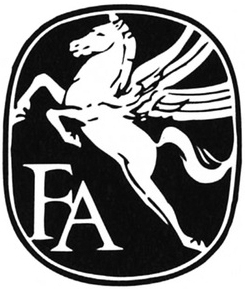
Fairchild was an American aircraft and aerospace manufacturing company based at various times in Farmingdale, New York; Hagerstown, Maryland; and San Antonio, Texas.

The Bell Aircraft Corporation was an American aircraft manufacturer, a builder of several types of fighter aircraft for World War II but most famous for the Bell X-1, the first supersonic aircraft, and for the development and production of many important civilian and military helicopters. Bell also developed the Reaction Control System for the Mercury Spacecraft, North American X-15, and Bell Rocket Belt. The company was purchased in 1960 by Textron, and lives on as Bell Textron.
The Curtiss-Wright Corporation is a manufacturer and services provider headquartered in Davidson, North Carolina, with factories and operations in and outside the United States. Created in 1929 from the consolidation of Curtiss, Wright, and various supplier companies, the company was immediately the country's largest aviation firm and built more than 142,000 aircraft engines for the U.S. military during World War II. Today, it no longer makes aircraft but makes many related components, particularly actuators, aircraft controls, valves, and surface-treatment services. It also supplies the commercial, industrial, defense, and energy markets; it makes parts for commercial and naval nuclear power systems, industrial vehicles, and oil- and gas-related machinery.

Glenn Hammond Curtiss was an American aviation and motorcycling pioneer, and a founder of the U.S. aircraft industry. He began his career as a bicycle racer and builder before moving on to motorcycles. As early as 1904, he began to manufacture engines for airships. In 1908, Curtiss joined the Aerial Experiment Association, a pioneering research group, founded by Alexander Graham Bell at Beinn Bhreagh, Nova Scotia, to build flying machines.

The ERCO Ercoupe is an American low-wing monoplane aircraft that was first flown in 1937. It was originally manufactured by the Engineering and Research Corporation (ERCO) shortly before World War II; several other manufacturers continued its production after the war. The final model, the Mooney M-10, first flew in 1968 and the last model year was 1970. It was designed to be the safest fixed-wing aircraft that aerospace engineering could provide at the time, and the type continues to enjoy a faithful following.

The Curtiss NC was a flying boat built by Curtiss Aeroplane and Motor Company and used by the United States Navy from 1918 through the early 1920s. Ten of these aircraft were built, the most famous of which is the NC-4, the first airplane to make a transatlantic flight. The NC-4 is preserved in the National Museum of Naval Aviation, at NAS Pensacola, Florida.

The Beechcraft Model 17 Staggerwing is an American biplane with an atypical negative wing stagger. It first flew in 1932.

The Travel Air Manufacturing Company was an aircraft manufacturer established in Wichita, Kansas, United States in January 1925 by Clyde Cessna, Walter Beech, and Lloyd Stearman.
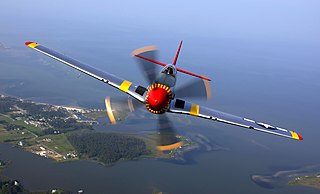
An airplane, or aeroplane, informally plane, is a fixed-wing aircraft that is propelled forward by thrust from a jet engine, propeller, or rocket engine. Airplanes come in a variety of sizes, shapes, and wing configurations. The broad spectrum of uses for airplanes includes recreation, transportation of goods and people, military, and research. Worldwide, commercial aviation transports more than four billion passengers annually on airliners and transports more than 200 billion tonne-kilometers of cargo annually, which is less than 1% of the world's cargo movement. Most airplanes are flown by a pilot on board the aircraft, but some are designed to be remotely or computer-controlled such as drones.
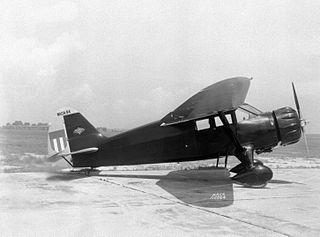
The Stinson Reliant is a popular single-engine four- to five-seat high-wing monoplane manufactured by the Stinson Aircraft Division of the Aviation Manufacturing Corporation of Wayne, Michigan.
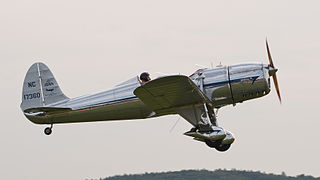
The Ryan STs were a series of two seat, low-wing monoplane aircraft built in the United States by the Ryan Aeronautical Company. They were used as sport aircraft, as well as trainers by flying schools and the militaries of several countries.

The Curtiss Model N was a military trainer used primarily by the United States Navy during World War I.
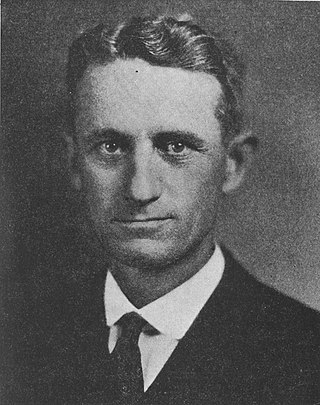
Winfield Bertrum "Bert" Kinner was an American aircraft engine designer and designer of the first folding wing aircraft. Kinner founded Kinner Airplane & Motor Corporation in Glendale, California which produced radial engines and aircraft.

Great Lakes Aircraft Company is an aircraft manufacturer known for the 2T-1A Sport Trainer biplane. The company has a long history of building both private and military aircraft.

The Harlow PJC-2 was a 1930s American four-seat cabin monoplane, designed by Max Harlow.
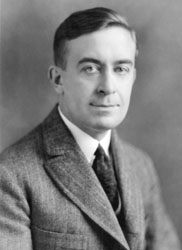
Alfred Victor Verville was an American aviation pioneer and aircraft designer who contributed to civilian and military aviation. During his forty-seven years in the aviation industry, he was responsible for the design and development of nearly twenty commercial and military airplanes. Verville is known for designing flying boats, military racing airplanes, and a series of commercial cabin airplanes. His planes were awarded with the Pulitzer Speed Classic Trophy in 1920 and 1924.

The Stearman-Hammond Y-1 was a 1930s American utility monoplane built by the Stearman-Hammond Aircraft Corporation and evaluated by the United States Navy and the British Royal Air Force.
Ole (Olaf) Fahlin was a Swedish aviator who made his career manufacturing propellers and aviation products in the United States. He also developed prototype airplanes and worked in projects with Chrysler and Lockheed Corporation. His propellers were famous for their performance. During World War II he manufactured propellers for the U.S. government.

The Fahlin SF-2 Plymocoupe was a high-wing, cantilever type, prototype experimental airplane produced in 1935.
References
- 1 2 Bell, R.W.. "The Harper Aircraft Manufacturing Company, Inc.." Bedford Historical Society. N.p., n.d. Web. 19 June 2010. <http://www.bedfordohiohistory.org/build/harper-aircraft.php>.
- ↑ Air commerce bulletin, United States. Bureau of Air Commerce, United States. Civil Aeronautics Authority,U.S. G.P.O., 1933, p. 103